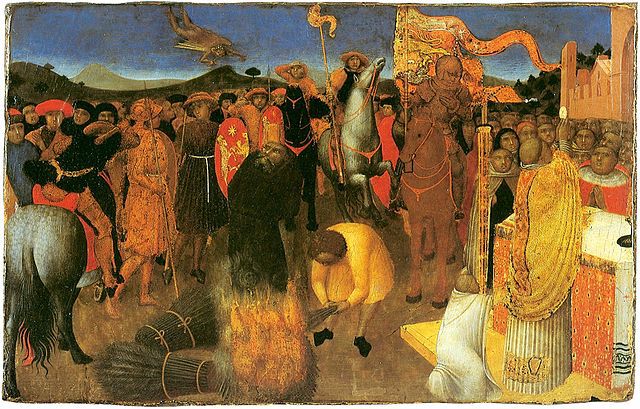There have always been heretics in Christianity. Even when the religion was fragmented, furtive, and persecuted church leaders were warning against those who put their spin on the accepted church doctrine that was “revealed by God and solemnly defined by the church.” “There shall be false teachers among you, who privily shall bring in damnable heresies,” warned the author of the Second Epistle of St Peter, some time in the first century AD, reminding his congregation not to challenge their bishops whose words, as heirs of Christ’s apostles, were law.
Throughout Antiquity and the Middle Ages, various ‘false leaders’ tried and failed to challenge the church’s supremacy – until finally in 1517, Martin Luther successfully started a religious revolution that split western Christianity into Roman Catholic and Protestant. Some of these previous heresies were far too wacky or radical to succeed, such as Triclavianism, which believed three nails, not four were used to crucify Christ, and the Barallots who threatened not just the church but the medieval social order with their belief in free love and communal property. Others, however, such as the Adoptionists, Montanism, Arianism, Pelagianism, the Nestorianism, the Cathars, Waldenses, Hussites, Dulcinians, and Lollards were credible enough to be a threat.

Adoptionism
Adoptionism is possibly the oldest Christian heresy, dating from the compilation of the first New Testament Gospels. Its roots lie in Ebionite Christianity, a very early Jewish-Christian sect which accepted Jesus as the Messiah-but rejected his divinity. Ebonite’s and Adoptionists believed that Christ was not born the Son of God but instead ‘adopted’ by him at his baptism in the River Jordan, because God judged him the most righteous man on earth and thus fit to be his son. The basis for this belief lay in the Gospel of Mark, the first of the Gospels to be written down and the earliest versions of the Gospel of Luke.
In the very earliest versions of the Gospel of Luke, the writer refers explicitly to Joseph as Jesus’s father. Later editions, however, have this reference removed to avoid confusion over the established view of Jesus’s divine paternity. Similarly, after Jesus’s baptism, early versions of Luke have god acknowledging him by saying: “You are my son, today I have begotten you, ” instead of “This is my beloved son, in whom I am well pleased.” In early versions of the Gospel of Mark Jesus only become ‘Christ” or the Son of God only after the divine spirit in the form of a dove has descended upon him.
Adoptionism as a specifically heretical movement can be traced to Rome in around 190AD during the reign of Commodus. This period was a calm time for early Christians when they were tolerated rather than persecuted by the Roman state. A wealthy Byzantine leather merchant called Theodotus had settled in the city some years earlier. Theodotus was a Christian. However, he began to preach a view of Christ that caused a good deal of concern for the fledgling Roman church’s hierarchy- particularly to Victor I, the bishop of Rome.
Theodotus preached that Jesus was born just like everyone else, from the union of Mary and Joseph. There was no immaculate conception, no virgin birth. It was only after his baptism that he became imbued with the spirit of God- in other words, chosen or ‘adopted’ to be his son on earth. According to Theodotus, this explained why Jesus only worked miracles after his baptism; because this was the moment when he became divine, and so had the power to do so. Before then, he was just a man like any other.
This viewpoint was alarming for the early Church because it took away Jesus’s unique status and so the basis for Church authority. It also implied that anyone who led a sinless life could become ‘divine.’ So Victor tried to force Theodotus to recant his words. When he would not, Victor excommunicated him. Theodotus continued undeterred, forming a separate congregation which existed separately in Rome for some years. However, as the gospels were ‘edited,’ the textual basis for adoptionism began to disappear. The heresy was unequivocally outlawed in 325 AD when the Council of Nicaea formalized the canon of Church. However, adoptionism continued in pockets, even resurging briefly in eight century Spain.
Other early heresies were even more of a concern- notably when they gave authority to women!

